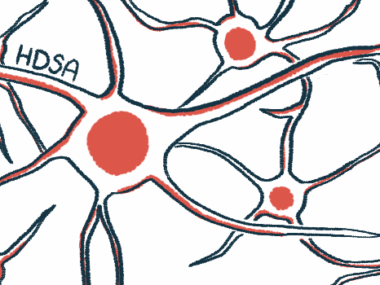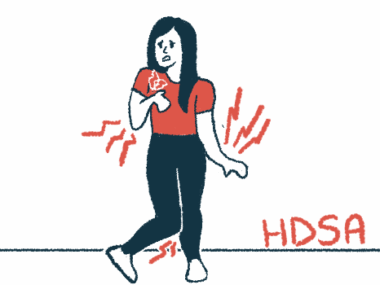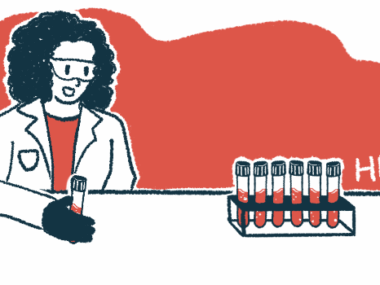Michigan scientist gets HDSA grant to study how Huntington’s acts
Fellowship supports early-career scientists exploring new HD therapies
Written by |

A postdoctoral researcher at the University of Michigan won a three-year grant to support her work investigating the cellular mechanisms underlying Huntington’s disease.
The Huntington’s Disease Society of America (HDSA) awarded its Berman-Topper Family HD Career Development Fellowship to Elizabeth Tidwell, PhD, whose project, “Determining the structure of Huntingtin RNA and RNA-protein complexes using single particle cryo-electron microscopy,” focuses on further understanding how excessive CAG repeats lead to cellular dysfunction in Huntington’s.
The fellowship, awarding up to $100,000 per year for three years to early-career scientists, is designed to support the next generation of leaders in Huntington’s research by giving them the resources and support they need to stay in the field. The goal is to ultimately fuel progress in the understanding and treatment of the rare neurodegenerative disease.
“Elizabeth Tidwell is exactly the kind of promising scientist we hope to welcome into the HD [Huntington’s disease] field through this fellowship,” Tamara Maiuri, PhD, HDSA’s associate director of research and patient engagement and a previous winner of the award, said in an organization press release.
Tidwell’s “work tackles a complex HD question with state-of-the-art tools, and her commitment to public outreach and advocacy makes her a true asset to the community,” Maiuri said. “We’re proud to support her journey into HD research.”
Detailing molecular activity
Huntington’s is characterized by a wide range of symptoms, including movement issues, cognitive impairment, and psychiatric and behavioral problems. It is caused by mutations in the HTT gene that’s responsible for producing the huntingtin protein.
These mutations are marked by the excessive repetition of a sequence of three DNA building blocks — CAG — in a certain region of the gene. This results in production of an abnormally long huntingtin protein that toxically accumulates in nerve cells.
The exact mechanisms of neurodegeneration in Huntington’s aren’t completely understood.
When the information in DNA is being used to make a protein, it is first transcribed into an intermediate template molecule called RNA. Tidwell will study how excessive CAG repeats affect the three-dimensional structure of HTT’s RNA and its interactions with proteins that influence RNA stability, localization, and translation into protein.
To visualize this in detail, Tidwell will use an advanced technique called cryo-electron microscopy.
She will do the research in the lab of her mentor, Melanie Ohi, PhD, who began work a few years ago to unravel whether it was HTT RNA, rather than the huntingtin protein itself, that causes cellular dysfunction in Huntington’s.
Ultimately, findings from the research could inform new treatment strategies in Huntington’s, for which there are currently no approved disease-modifying therapies. Huntington’s treatment largely relies on symptom management, rather than slowing or stopping disease progression.
The Berman-Topper Fellowship is intended for young scientists and clinicians who are within five years of obtaining their PhD or completing a medical residency/fellowship, and who are still being mentored in the laboratory of a more senior scientist.
It is supported by the Berman and Topper families, including Michael Berman and his life partner Jocelyn Topper, who carries a Huntington’s-causing mutation.
“I’d like to congratulate Dr. Elizabeth Tidwell on receiving this fellowship,” Berman said. “We’re thrilled to support her work and confident she’ll make important contributions to our understanding of HD.”






